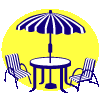|
Spain over Thanksgiving week, 2010 From Thursday, Nov. 18th, 2010 till Monday, Nov. 29th, 2010
Itinerary
|
|
Overall
|
|
|
|
Thursday, Nov. 18th, 2010 — Travel (Red Eye)
|
|
|
|
Friday, Nov. 19th, 2010 — Barcelona
|
|
|
|
Saturday, Nov. 20th, 2010 — Barcelona
|
|
|
|
Sunday, Nov. 21st, 2010 — Barcelona
|
|
|
|
Monday, Nov. 22nd, 2010 — Sevilla
|
|
|
|
Tuesday, Nov. 23rd, 2010 — Sevilla
|
|
|
|
Wednesday, Nov. 24th, 2010 — Sevilla
|
|
|
|
Thursday, Nov. 25th, 2010 — Granada
|
|
|
|
Friday, Nov. 26th, 2010 — Madrid
|
|
|
|
Saturday, Nov. 27th, 2010 — Madrid
|
|
|
|
Sunday, Nov. 28th, 2010 — Madrid
|
|
|
|
Monday, Nov. 29th, 2010 — NYC
|
|
|
